Nov 23, 2022
Technology
3
min read

Peter Lambrou
,
Sitecore Optimisation Consultant MVP Strategist
According to Wikipedia, a Market Segment or segmentation is “a process of dividing a heterogeneous market into relatively more homogenous segments based on certain parameters like geographics, demographics, psychographics and behaviour.”
In simple terms market segmentation is the process of dividing a broad consumer or business market.
How does this apply to Google Analytics? The official Google documentation says that “a segment is a subset of your analytics data”.
For example, of your entire set of website visitors (users), one segment may be users from a particular country or city. Another segment may be users who purchase a particular line of products or who visit a specific part of your website.
Google Analytics segments isolate users/sessions based on certain conditions to create a focused group from a larger population so that data can be easily analysed.
Benefits of creating Google Analytics segments
The first and most important benefit of creating Google Analytics segments is that it allows you to narrow down your broader data to focused specific subsets so you can see the exact set of data you want to measure.
This allows internal teams or stakeholders to ask questions directly related to that segment rather than address the entire data Google Analytics has to offer to them. Without segmentation all data is nothing but an aggregate. This makes it difficult to draw conclusions.
How to create Google Analytics segments
Log in to your Google Analytics account. In the Audience Overview click + Add Segment to open the create a segment window.
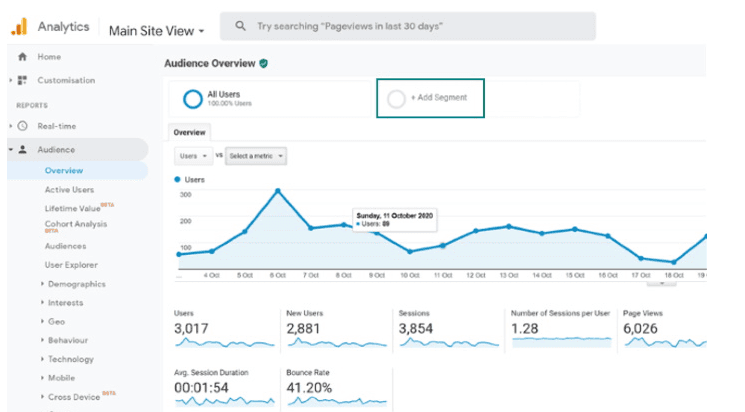
The create a segment window allows you to view existing default segments. The existing Google default segments are helpful as it allows for quick analysis. But to truly segment your audience according to your business needs, creating custom segments are recommended.
Click + New Segment to create a custom segment.
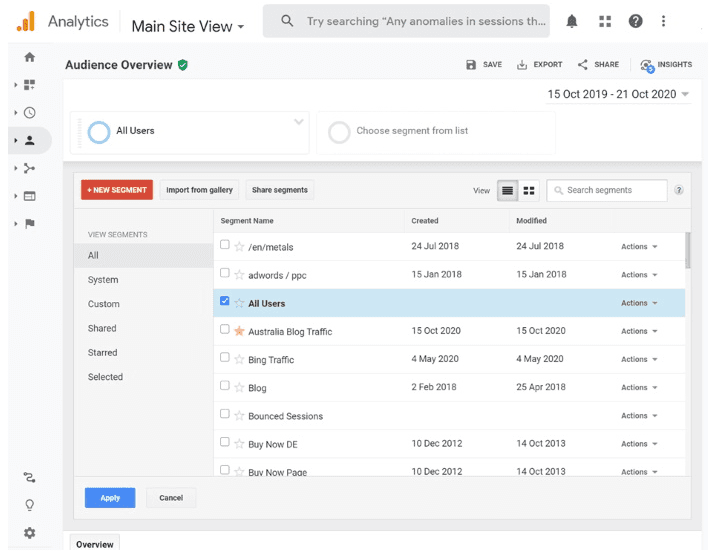
Name the segment and select conditions such as what demographics you want to filter by, what technology, behaviour, date of first session and traffic sources.
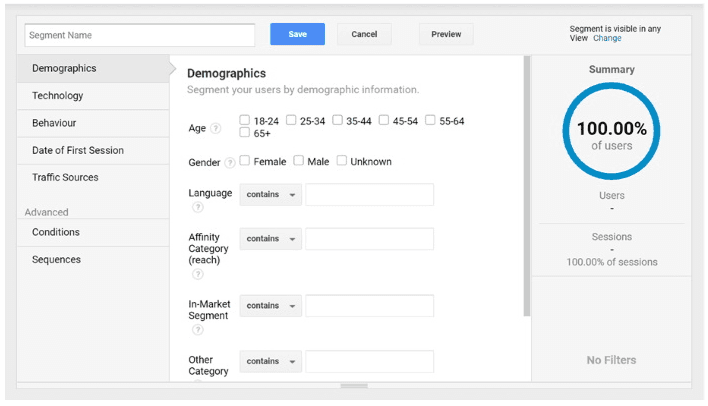
For a deeper understanding of your audience or to create a truly custom segment, it’s important to understand how to use the advanced filters.
Only main advanced filters can be created:
Conditions: Which segments users/sessions according to the single or multi touch points they go through
Sequences: Which segments users/sessions that follow a particular sequence
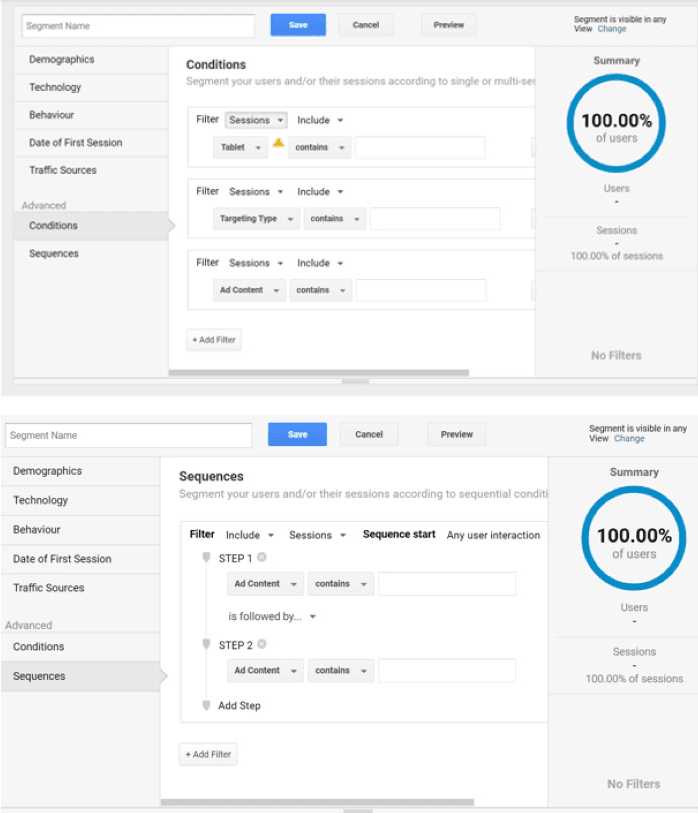
Having an in-depth understanding about users that visit your website will help create better segments.
For example, An ecommerce blog has articles that focus on payment gateways and articles that focus on product curation. Creating a segment to measure all users who have visited the payment gateway pages, and a segment which measures those who have visited the product curation pages allows for more meaningful analysis compared to looking at the entire aggregate performance.
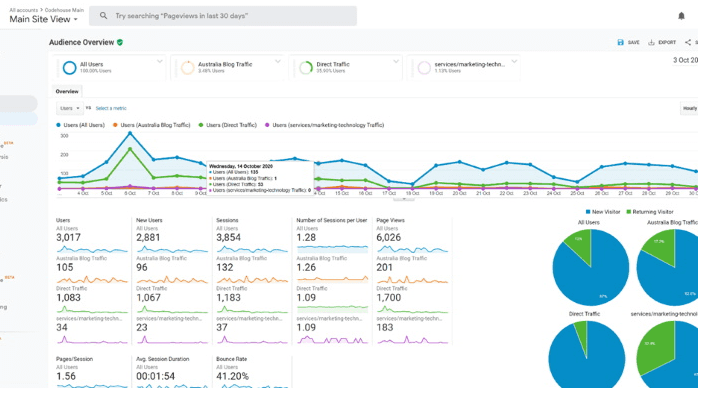
Google Analytics segments and Sitecore
If you have a Sitecore website, then you’re familiar with Sitecore Experience Analytics. It has many insightful metrics but the one metric that can be replicated as a Google Analytics segment is Pattern Matches.
This is achieved by using Sitecore profiling to create Profiles/Personas, Profile Keys, Profile Cards and Pattern Cards to segment your market, like Google Analytics segments.
With the profiling set up in Sitecore (and content profiled accordingly), you can then replicate the Profiles in Google Analytics as segments and compare data collected like page views and conversion rates over time. This will deliver comparative insights, help refine the user journey and ultimately improve the customer experience.
Working with Codehouse
Our Digital Experience Team has guided many customers to get the best from Google Analytics. To find out more about how we can help set up Sitecore profiles and Google Analytics segments, get in touch.
Images sourced from Google Analytics








